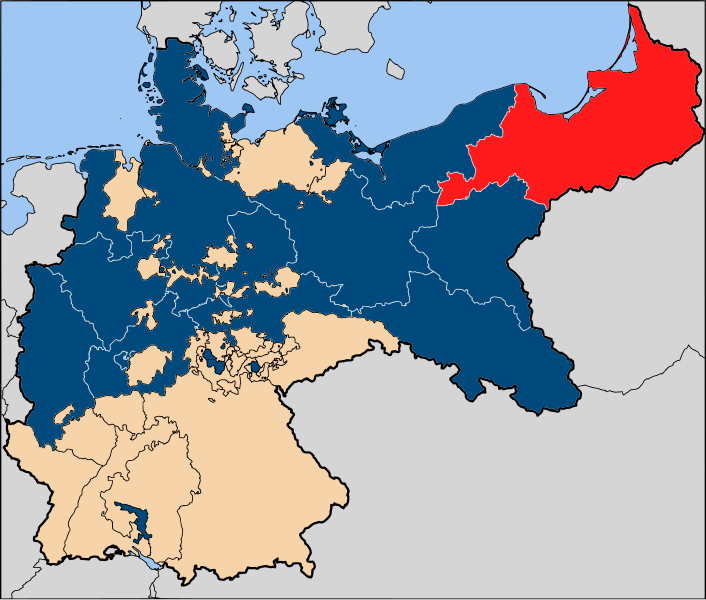LightSpectra
me autem minui
Technically speaking, "Prussia" is entirely confined to modern-day Poland.

Prussia only became attached to Germany because of a dynastic union between the Elector of Brandenburg and the Duchy of Prussia. Frederick II decided to call himself "King of Prussia" later in his rule because he did not want to be associated with the Habsburgs (being that the Margrave of Brandenburg held a vote in the election for Holy Roman Emperor).
Now, the Kingdom of Prussia managed to annex most of northern Germany after the Napoleonic Wars and the German Civil War, but these states are not technically "Prussia." When speaking in a humorous or historical context, people might refer to themselves as Prussians, but I don't know anybody in Germany who in a serious non-monarchist context will speak of a still-existent "Prussia."
Spoiler :

Prussia only became attached to Germany because of a dynastic union between the Elector of Brandenburg and the Duchy of Prussia. Frederick II decided to call himself "King of Prussia" later in his rule because he did not want to be associated with the Habsburgs (being that the Margrave of Brandenburg held a vote in the election for Holy Roman Emperor).
Now, the Kingdom of Prussia managed to annex most of northern Germany after the Napoleonic Wars and the German Civil War, but these states are not technically "Prussia." When speaking in a humorous or historical context, people might refer to themselves as Prussians, but I don't know anybody in Germany who in a serious non-monarchist context will speak of a still-existent "Prussia."


 [/URL][/IMG]
[/URL][/IMG]
